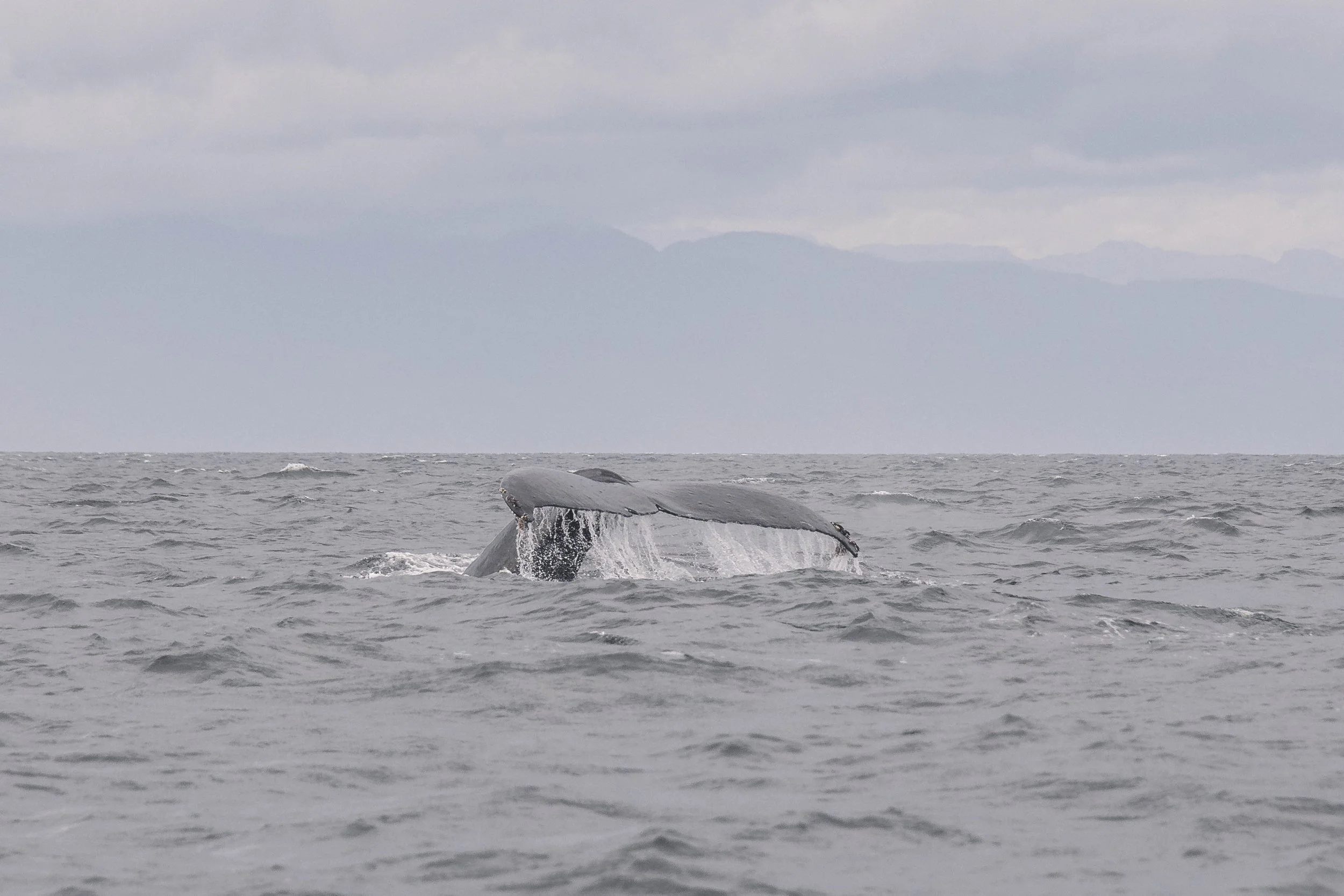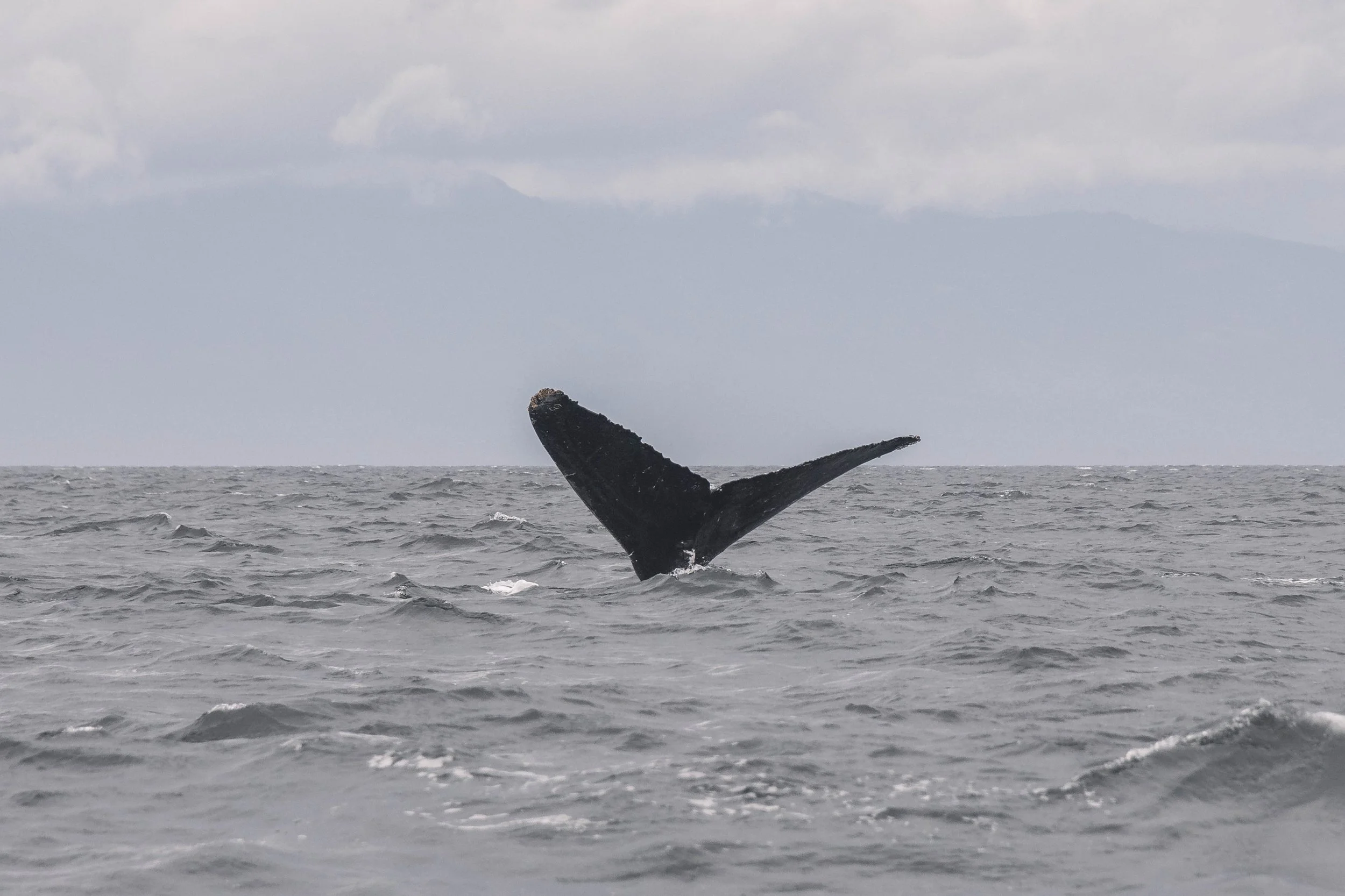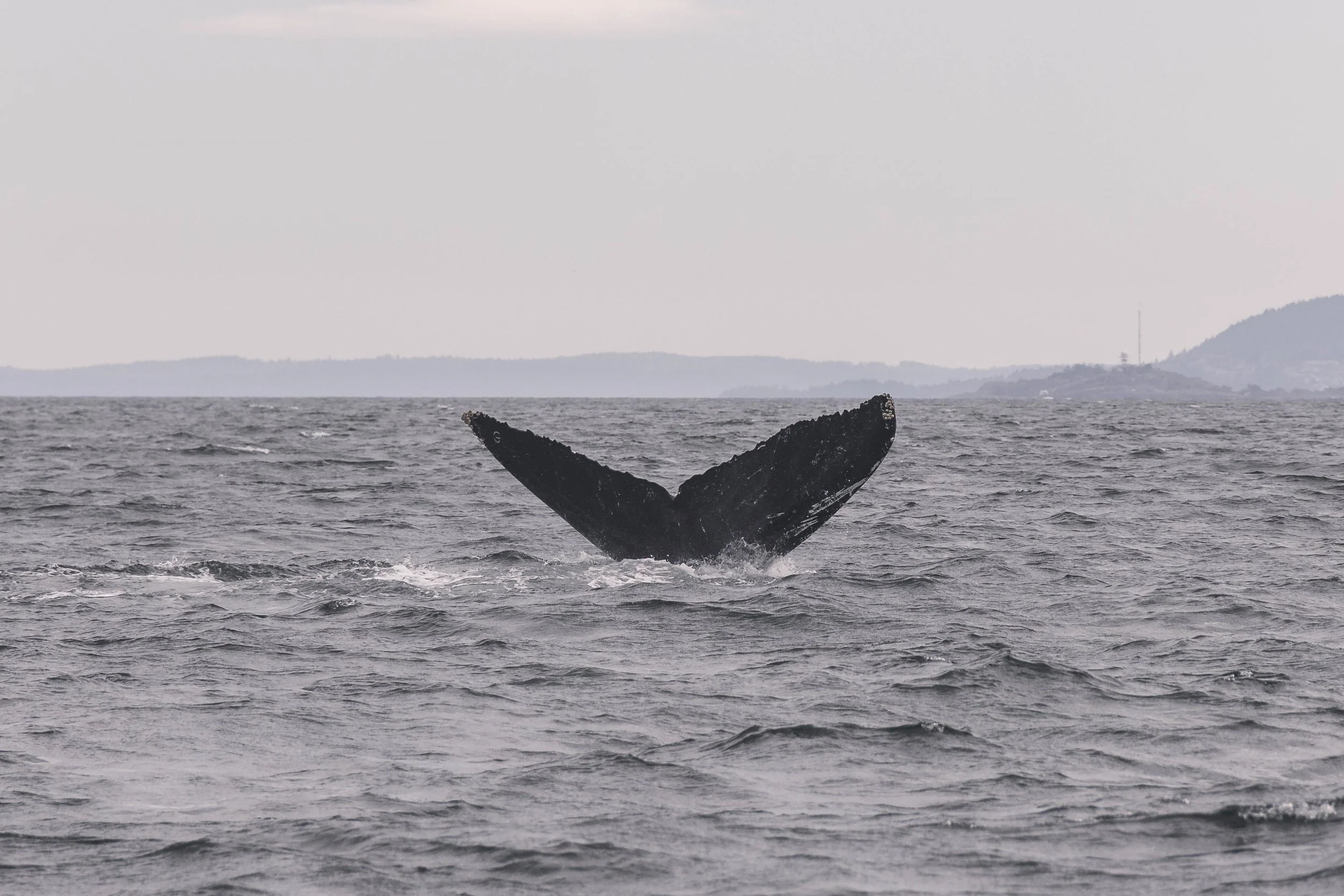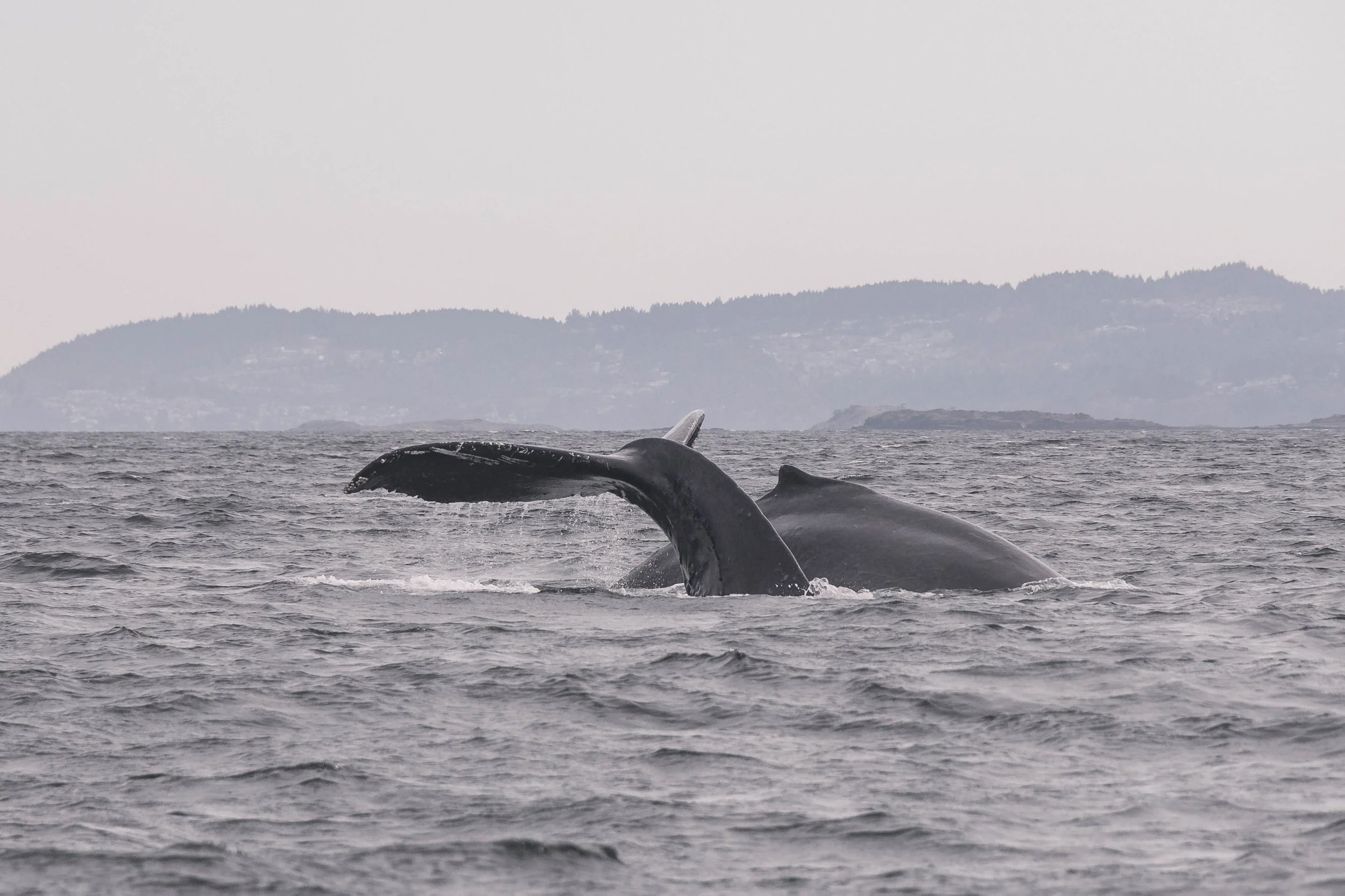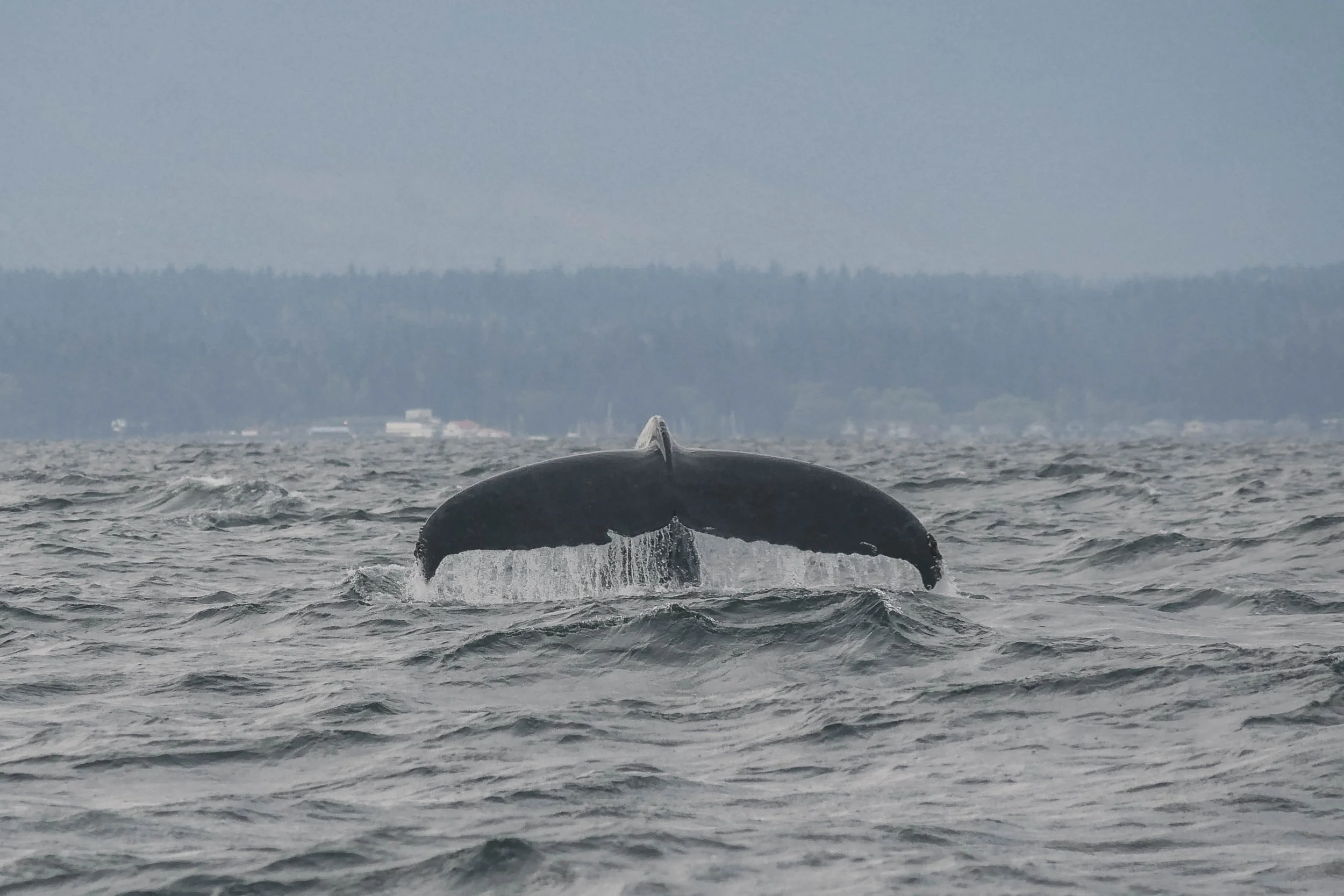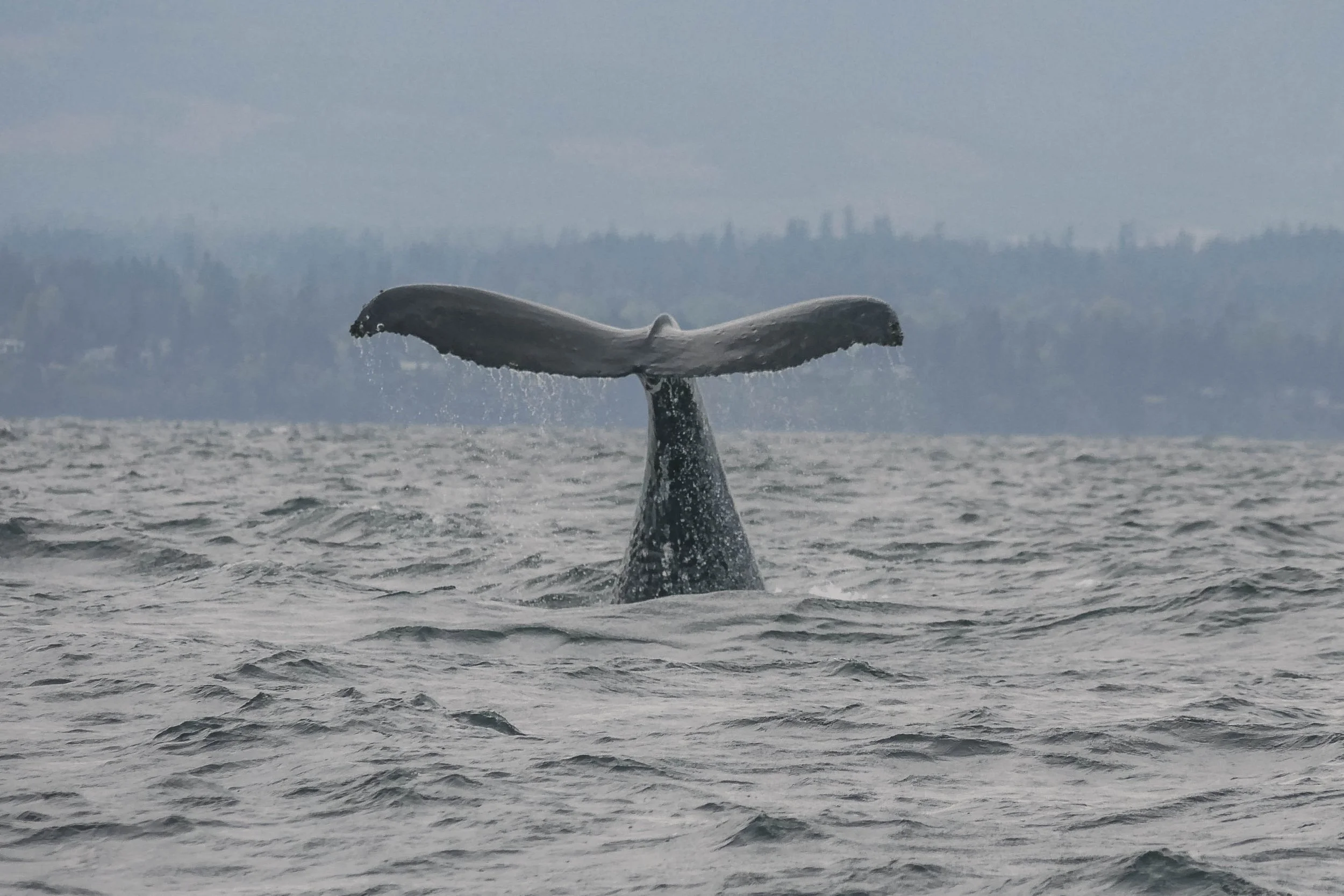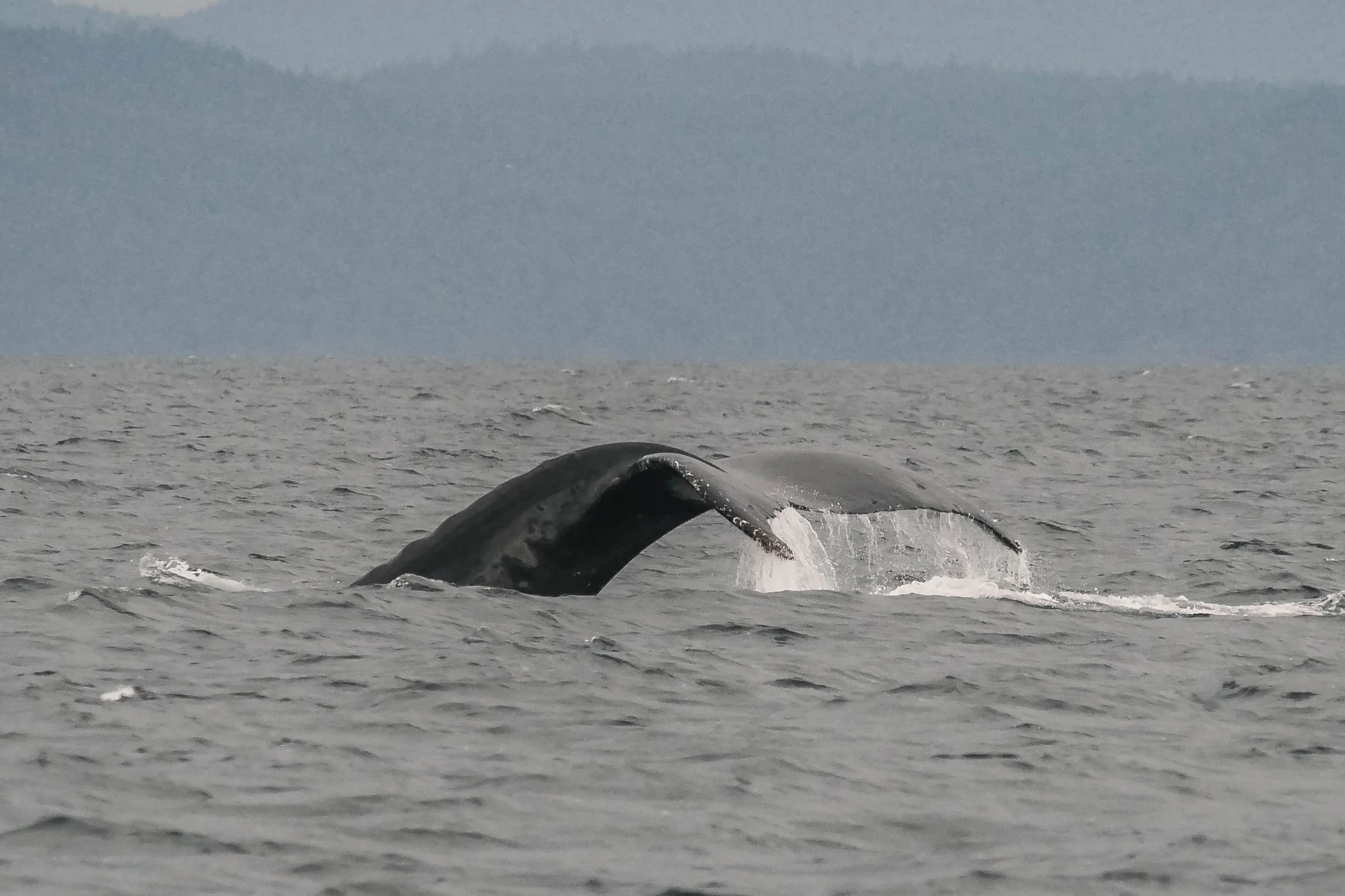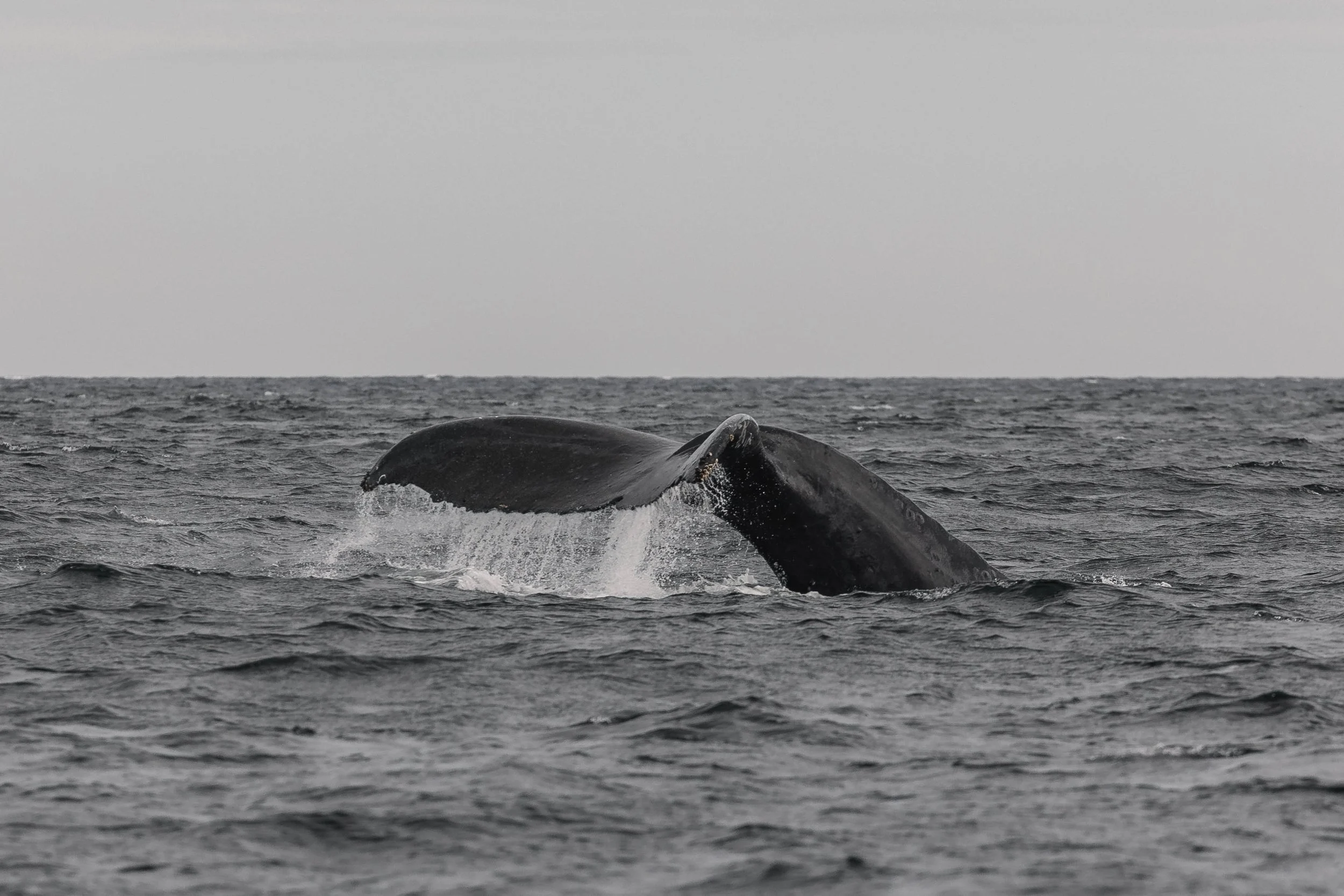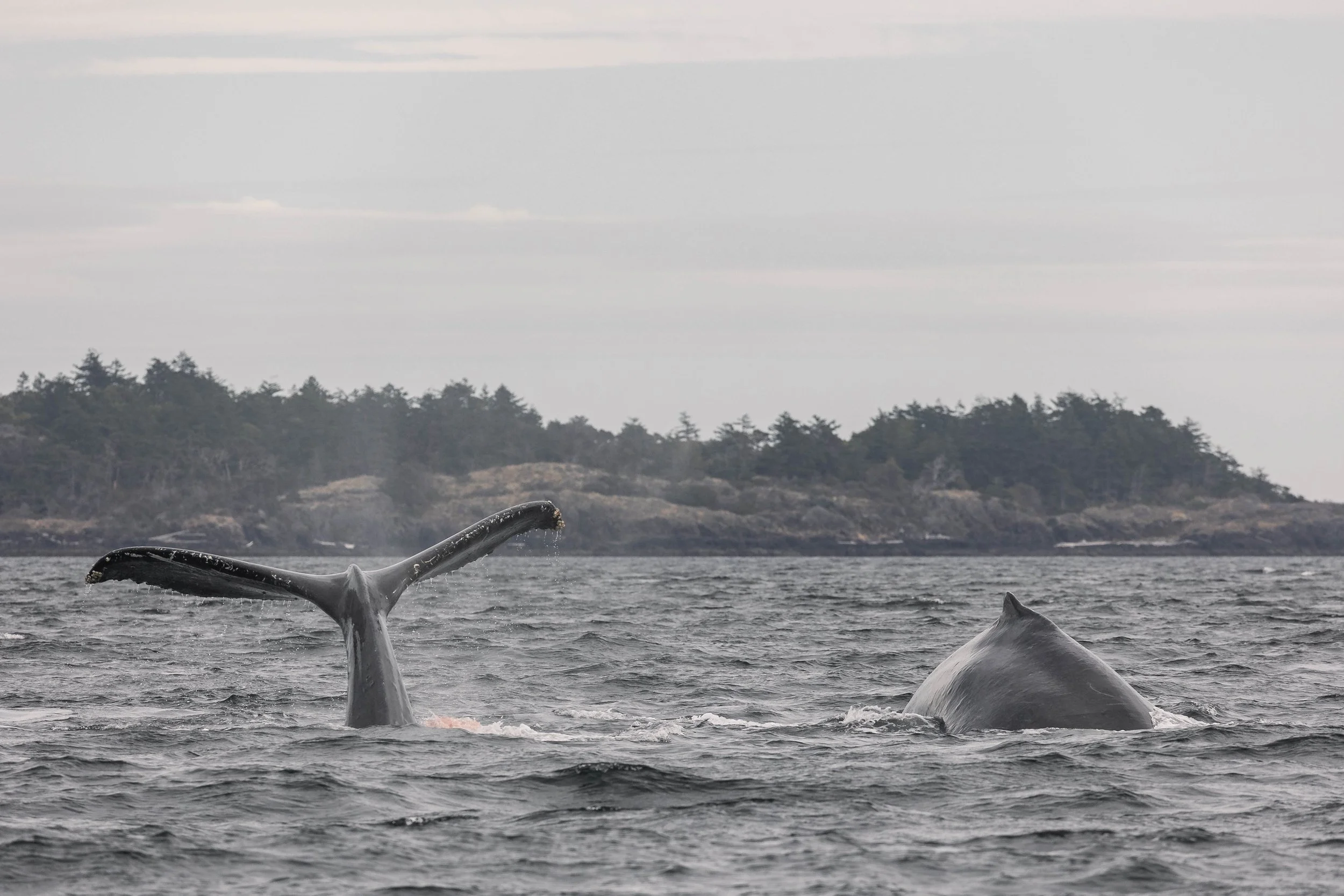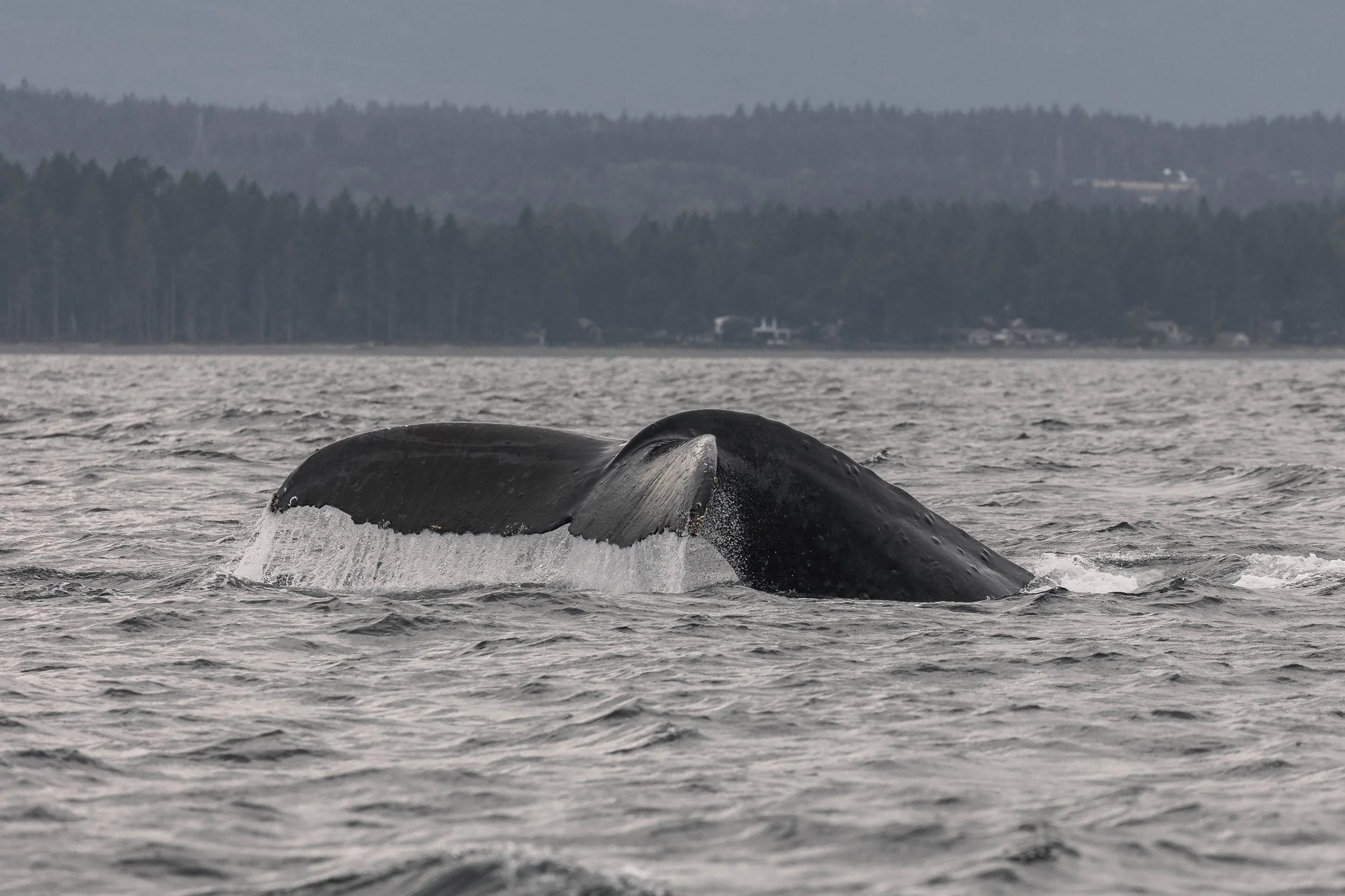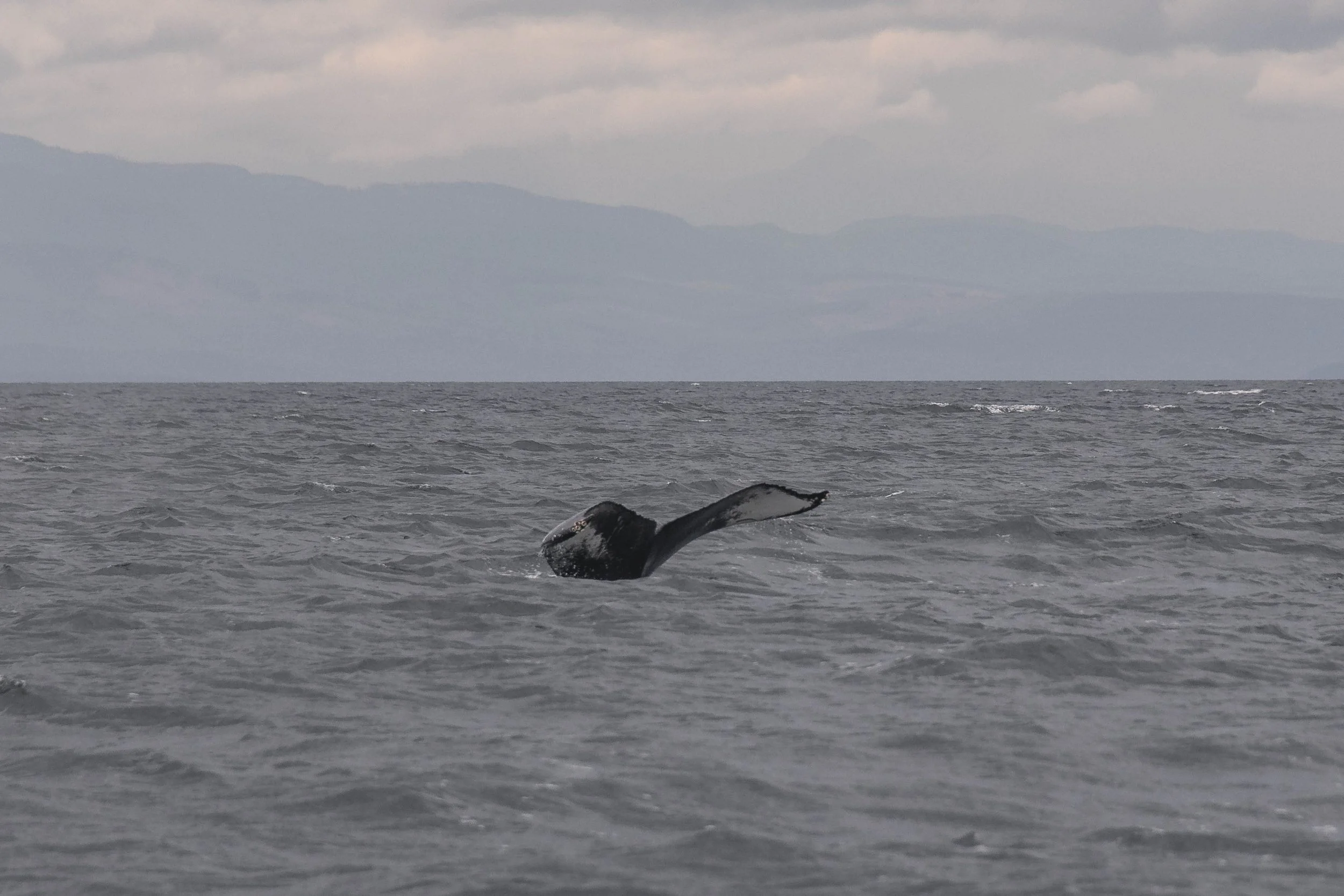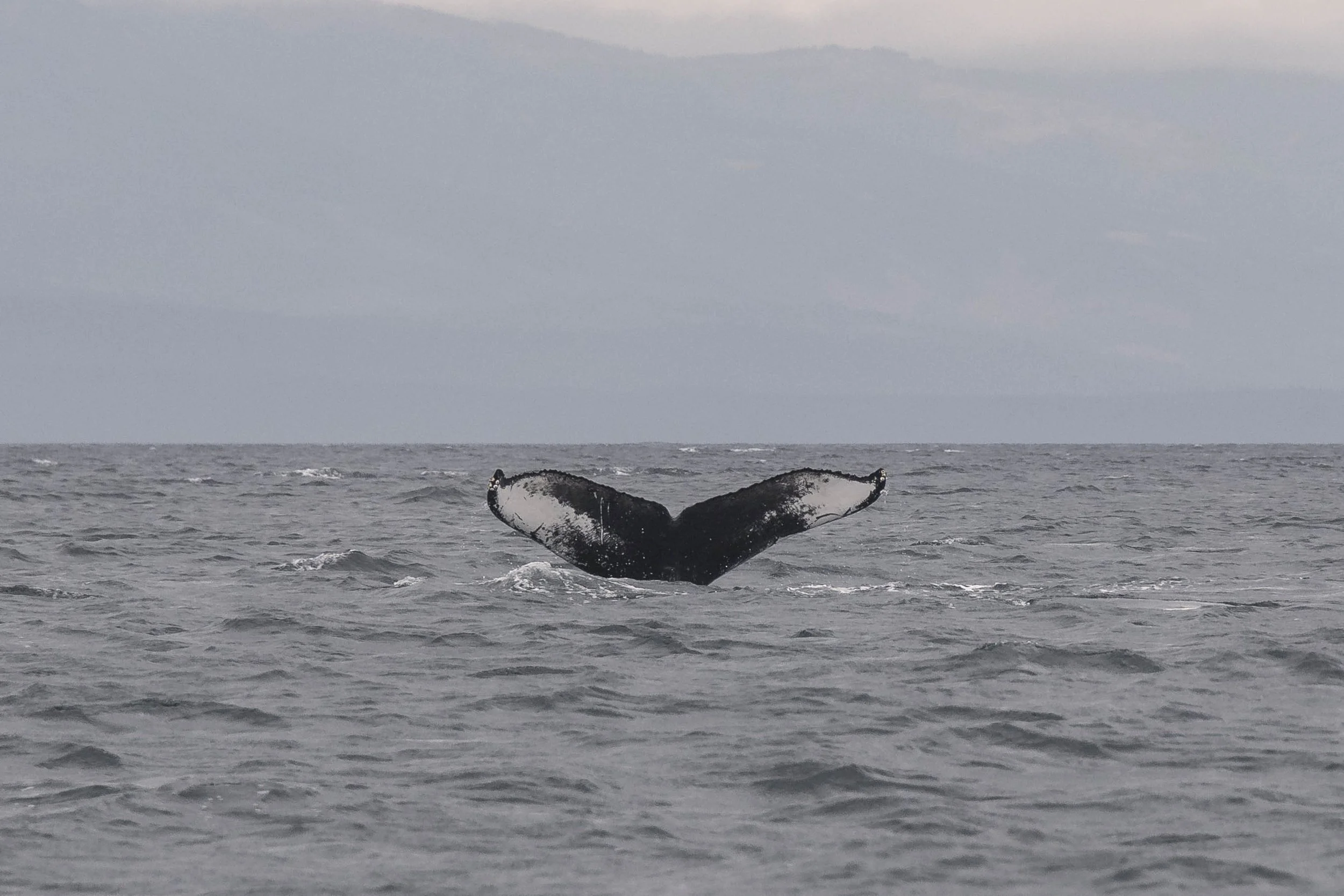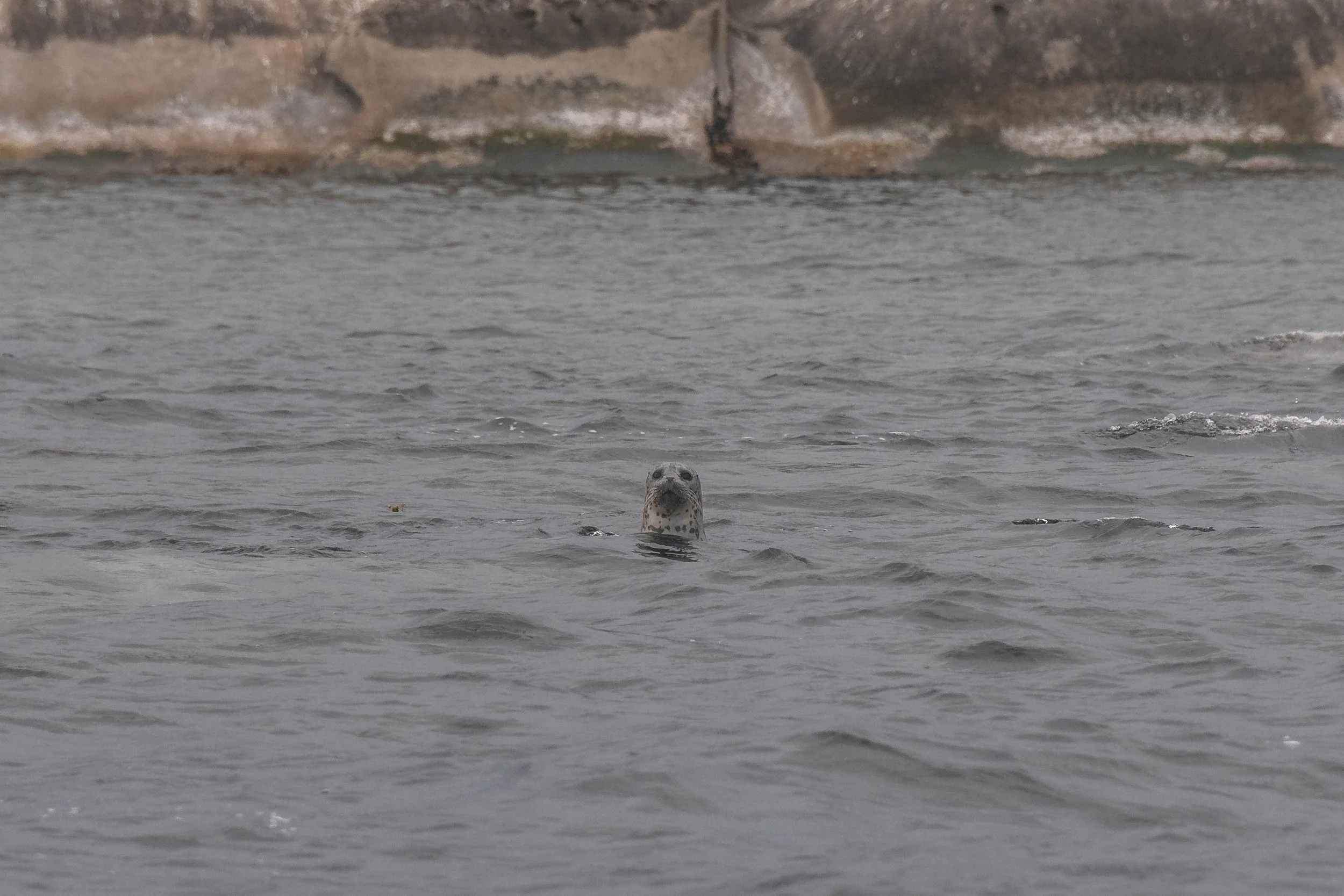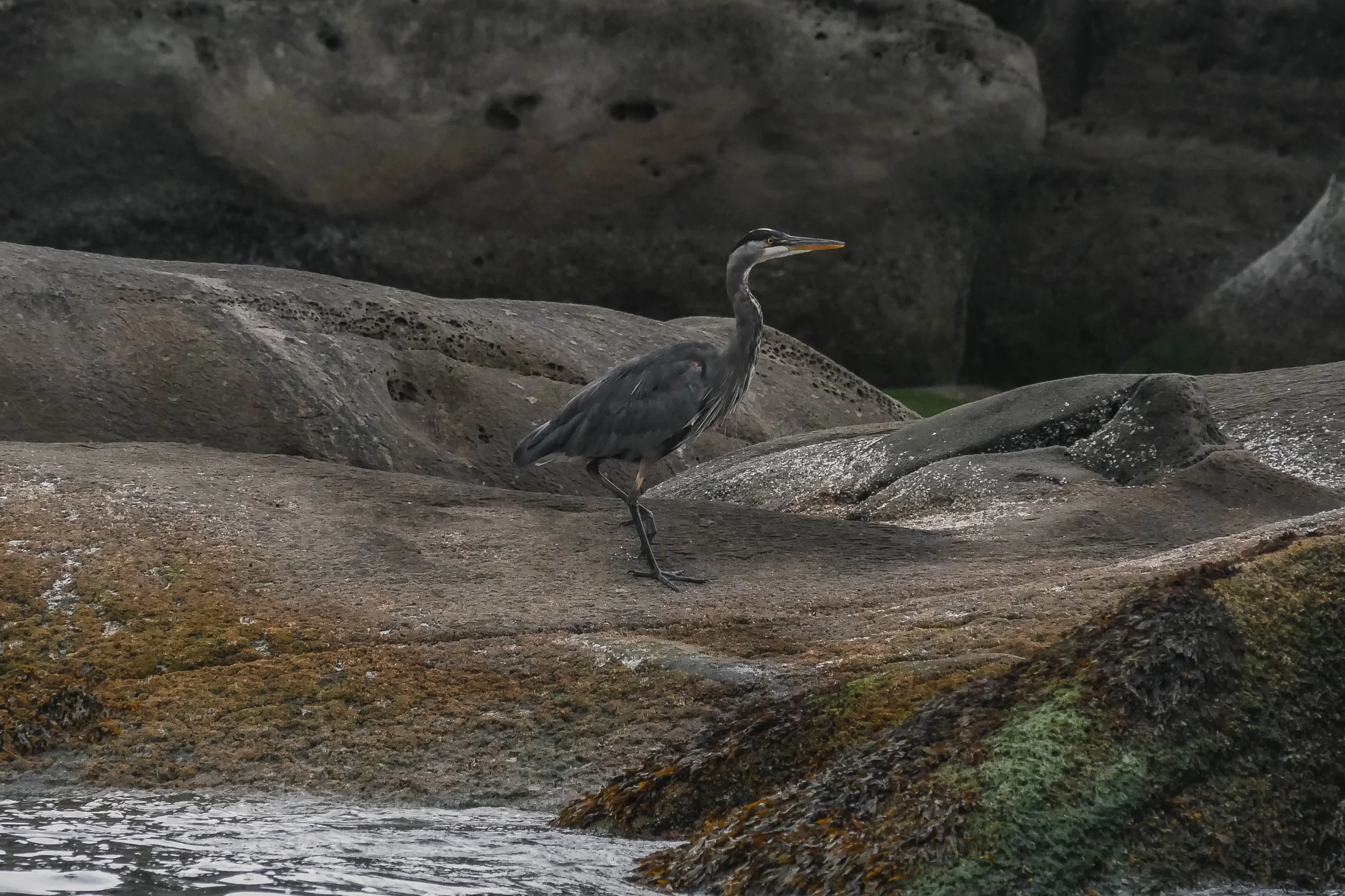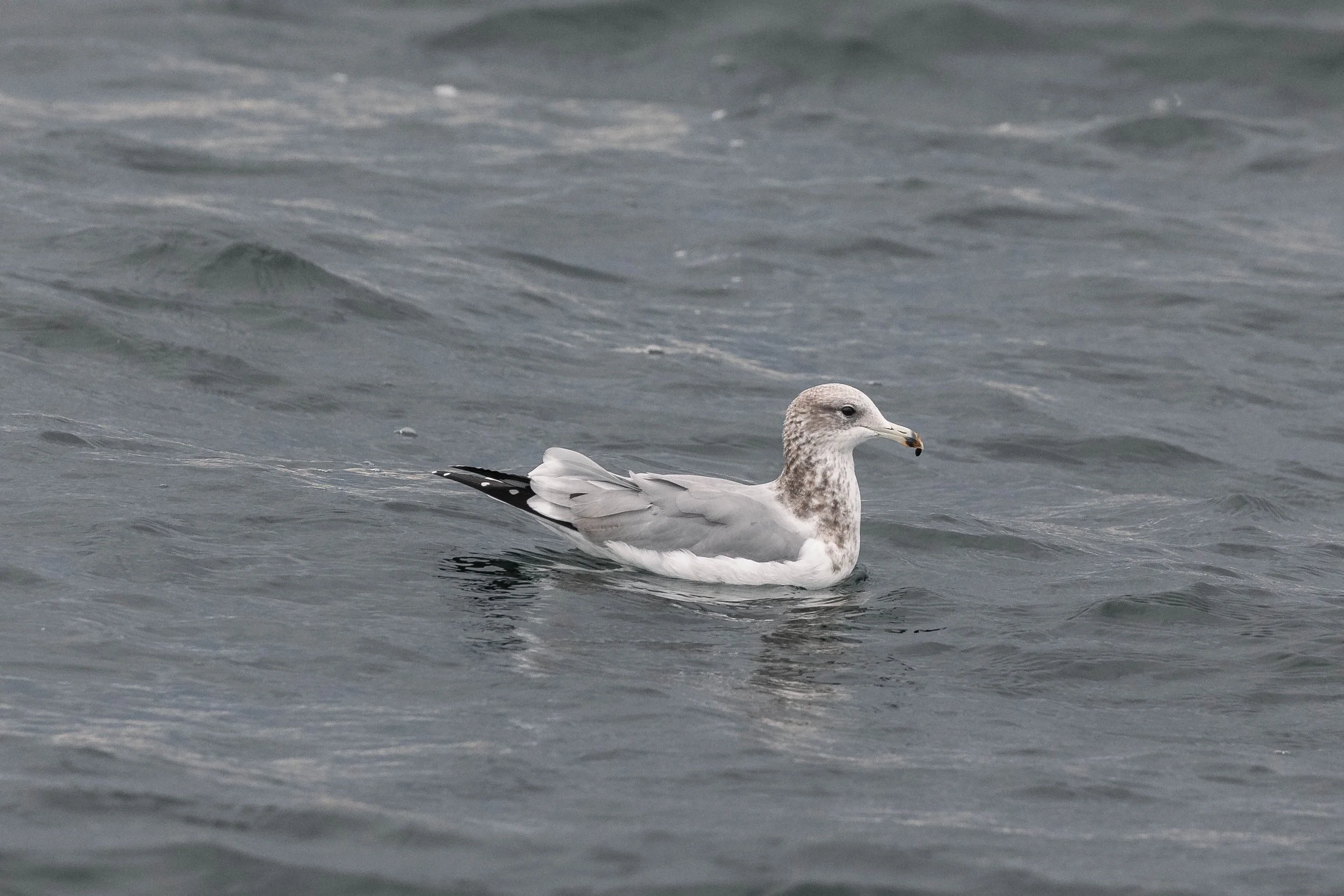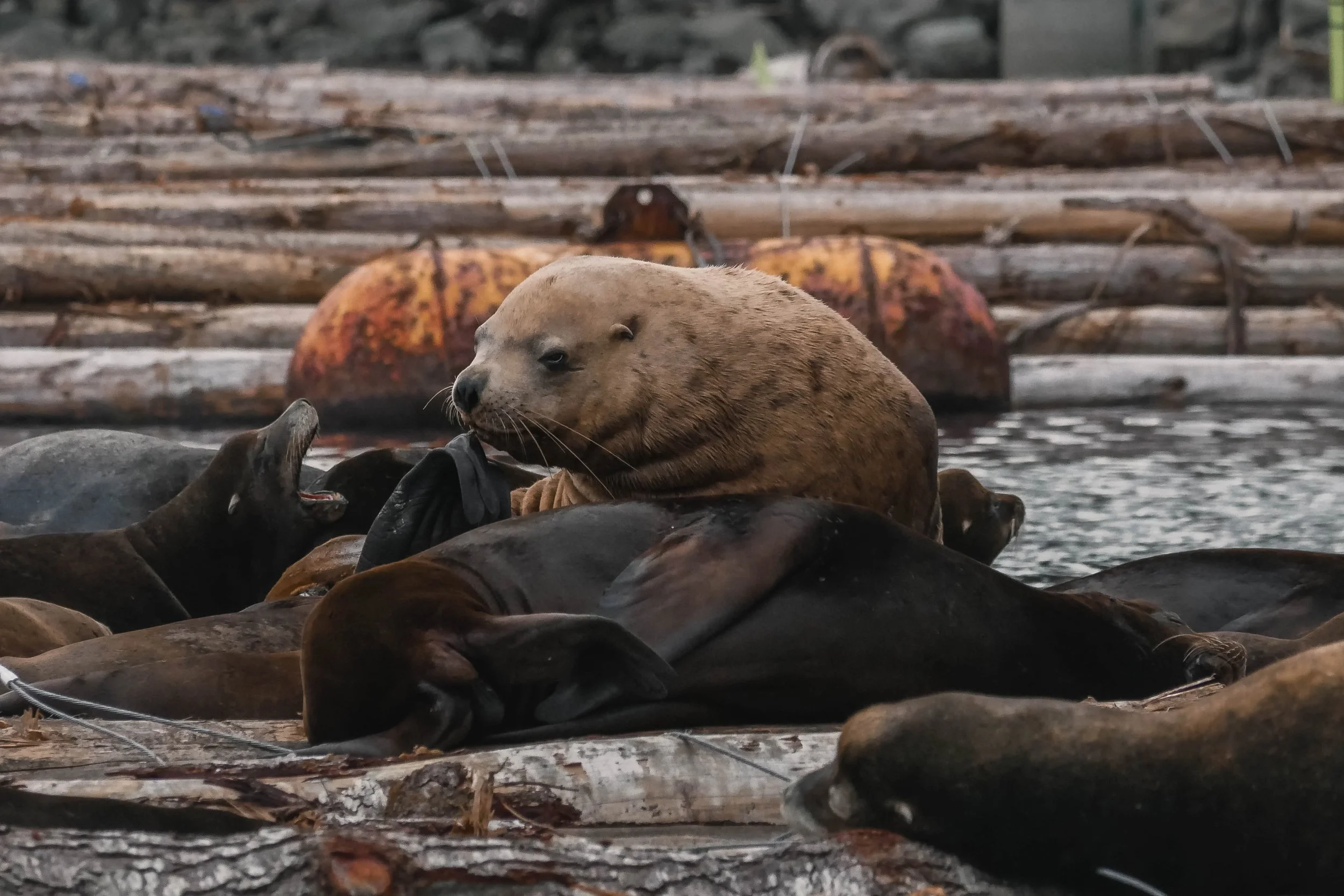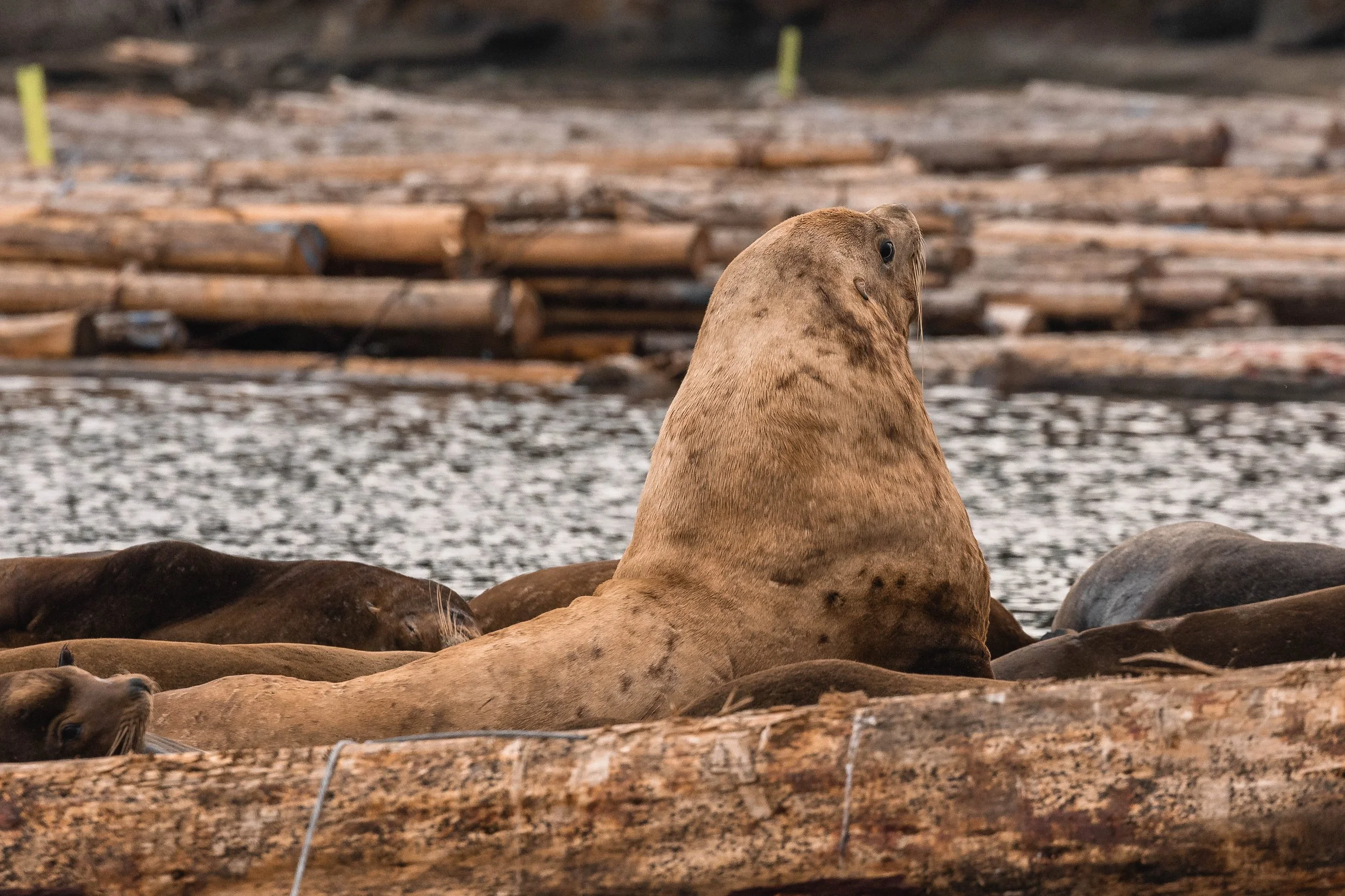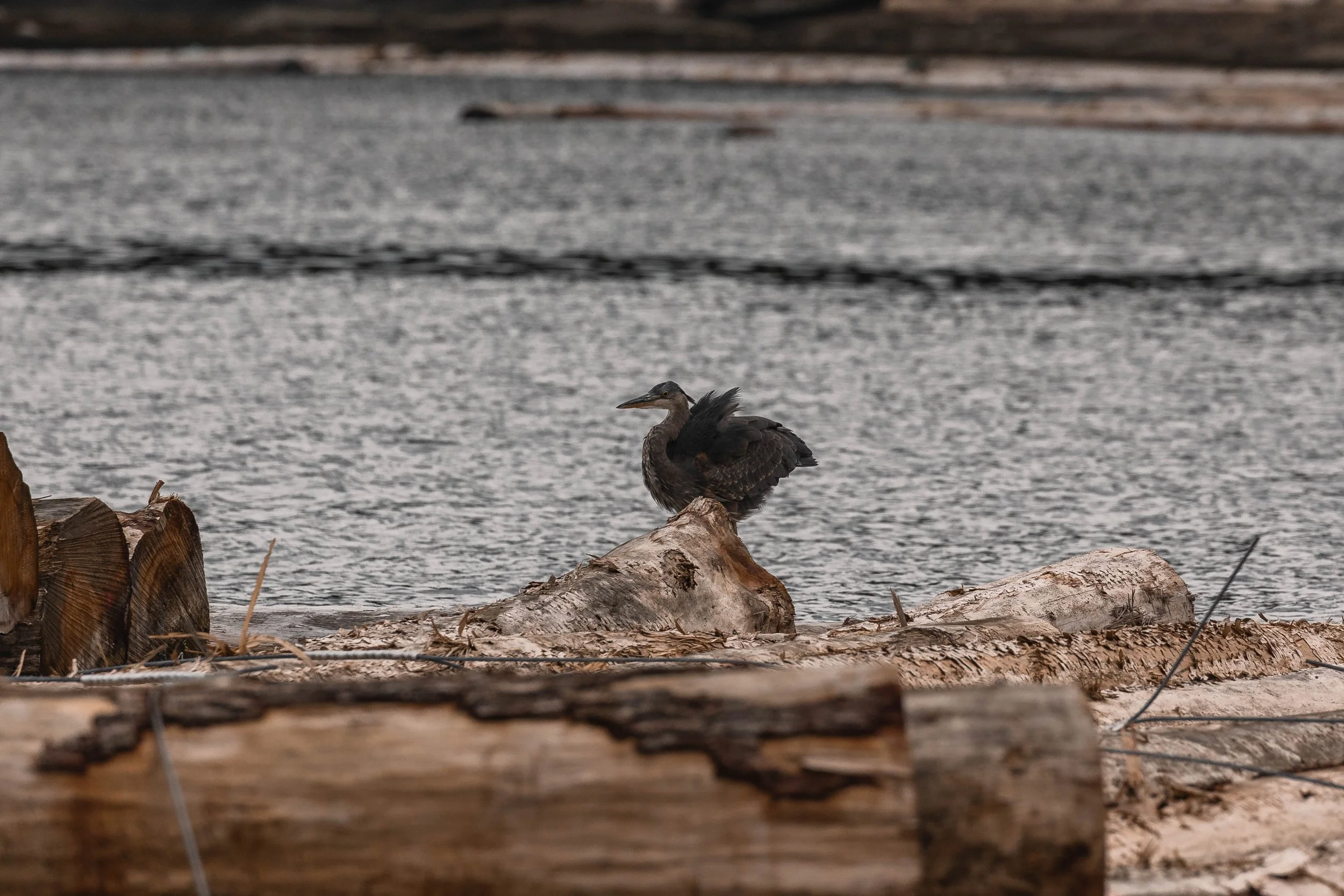September 20, 2025 - Double Humpback pairs in the Salish Sea
Today was a classic west-coast morning: clouds scattered across the sky with the sun peeking through, creating a stunning backdrop for our day on the water. All three of our vessels departed Nanaimo Harbour and headed north into the Strait of Georgia, travelling toward Nanoose Bay and riding the waves along the way.
As we entered the Winchelsea Island Archipelago, our search for whales was rewarded. In the distance, we spotted two humpback whales moving through the water together. Upon approach, we were able to quickly identify them as El Diablo (BCX0132) and Geometry (BCZ0338). These whales were actively feeding, regularly lifting their massive tails into the air before diving beneath the surface in search of krill and small schooling fish.
Humpback whales play an important role in the Salish Sea ecosystem, often referred to as “ecosystem engineers.” One of the ways they influence their environment is through the process of nutrient cycling. By feeding at depth and defecating at the surface, they act as “nitrogen pumps,” transporting essential nutrients from the deep waters to the surface. This activity supports the growth of plankton, which forms the base of the marine food web. Today, we were lucky enough to witness this firsthand as El Diablo released red-tinged fecal plumes, a clear demonstration of this vertical nutrient transfer.
But humpbacks don’t just move nutrients vertically. As they migrate south for the winter, they carry stored energy from their feeding grounds, effectively acting as a horizontal nutrient conveyor belt. While on their southern migration, they rely on fat reserves accumulated over the summer, releasing nitrogen in the form of urea while fasting, which further contributes to nutrient distribution across vast distances.
After observing El Diablo and Geometry, we continued our journey and quickly encountered another pair of humpbacks feeding in the area: Potamus’s 2023 calf and Poseidon (BCX2078), a 2019 calf of Whiskers. These younger individuals perform the same ecological role as their older counterparts, though their smaller size means their nutrient contribution is proportionally less. Regardless of age, each encounter highlights the remarkable presence of humpbacks in the Salish Sea and the ongoing recovery of their populations following the era of commercial whaling.
On our return toward Nanaimo, we made a few additional stops to observe other marine life. Snake Island provided a chance to see Harbour Seals resting on the rocks, while near the Harmac Pulp Mill, we observed both California and Steller Sea Lions taking advantage of the area’s haul-out sites. These pinnipeds rely on time out of the water to thermoregulate and conserve energy, a crucial complement to their daily foraging activities.
Finally, we found ourselves back in the Nanaimo Harbour, very happy with all the amazing wildlife encounters we had today. Throughout the trip, our Marine Naturalists onboard, Desarae Poier, Hayleigh Hilbert, and Jordan Robinson, captured photos of these encounters. Please enjoy them below!
El Diablo going for a dive. Photo by Desarae Poier.
Geometry going for a dive. Photo by Desarae Poier.
El Diablo lifting her tail to dive. Photo by Desarae Poier.
The underside of El Diablo’s tail. Photo by Desarae Poier.
El Diablo creating a fluke waterfall. Photo by Desarae Poier.
El Diablo has some very distinct scarring. Photo by Desarae Poier.
Whale watchers looking on as El Diablo goes for a dive. Photo by Desarae Poier.
El Diablo lifting her tail to dive with Geometry arching beside her. Photo by Desarae Poier.
Geometry going for a dive. Photo by Hayleigh Hilbert.
El Diablo doing a nice high fluke. Photo by Hayleigh Hilbert.
Geometry going for a dive. Photo by Hayleigh Hilbert.
You can see the barnacles on the edges of Geometry’s tail. Photo by Jordan Robsinson.
El Diablo going for a dive, creating a fluke waterfall. Photo by Jordan Robsinson.
A fluke waterfall from El Diablo. Photo by Jordan Robsinson.
El Diablo diving on the left, with Geometry arching on the right. Can you spot the poop in the water? Photo by Jordan Robsinson.
A great look at El Diablo going for a dive. Photo by Jordan Robsinson.
Potamus’ 2023 calf going for a dive. Photo by Jordan Robsinson.
The underside of Potamus’s 2023 calf’s tail. Photo by Desarae Poier.
The underside of Potamus’ 2023 calf’s tail. Photo by Desarae Poier.
The underside of Posedon’s tail as they dive. Photo by Desarae Poier.
A beautiful look at Potamus’s 2023 calf tail. Photo by Jordan Robsinson.
Posedon going for a dive. Photo by Jordan Robsinson.
Harbour Seals spending time on Snake Island. Photo by Desarae Poier.
A curious Harbour Seal watching from the water. Photo by Desarae Poier.
A Great Blue Heron sending time on the rocks. Photo by Hayleigh Hilbert.
Harbour Seals spending time on Snake Island. Photo by Jordan Robsinson.
Black Oystercatchers flying by. Photo by Jordan Robsinson.
A gull floating by as we watched the Harbour Seals. Photo by Jordan Robsinson.
Sea Lions spending time on the Log Booms of Harmac. Photo by Hayleigh Hilbert.
Look how big the Steller Sea Lion is compared to the California Sea Lions! Photo by Jordan Robsinson.
A fluffed up Great Blue Heron on the log booms. Photo by Jordan Robsinson.
A Great Blue Heron on the dock. Photo by Jordan Robsinson.


